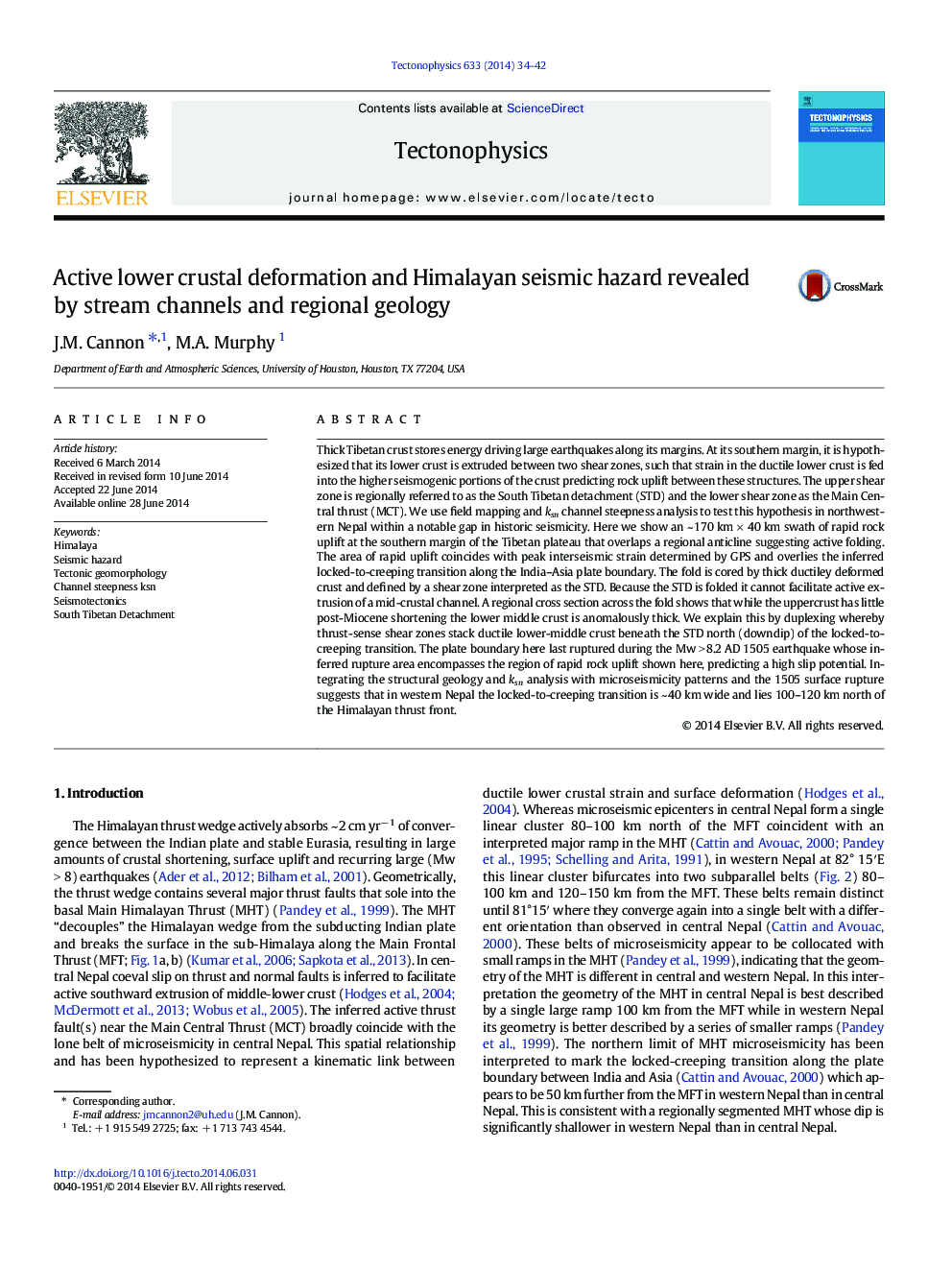| کد مقاله | کد نشریه | سال انتشار | مقاله انگلیسی | نسخه تمام متن |
|---|---|---|---|---|
| 6433797 | 1636758 | 2014 | 9 صفحه PDF | دانلود رایگان |
- Channel steepness analysis suggests active uplift at rear of Himalayan thrust wedge.
- Field mapping points to deep-seated folding in the region down-dip of MHT locking line.
- Thrust wedge structure indicates localized thickening and suggests active duplexing.
- Results suggest persistent uplift and shortening in Central Seismic Gap.
Thick Tibetan crust stores energy driving large earthquakes along its margins. At its southern margin, it is hypothesized that its lower crust is extruded between two shear zones, such that strain in the ductile lower crust is fed into the higher seismogenic portions of the crust predicting rock uplift between these structures. The upper shear zone is regionally referred to as the South Tibetan detachment (STD) and the lower shear zone as the Main Central thrust (MCT). We use field mapping and ksn channel steepness analysis to test this hypothesis in northwestern Nepal within a notable gap in historic seismicity. Here we show an ~ 170 km Ã 40 km swath of rapid rock uplift at the southern margin of the Tibetan plateau that overlaps a regional anticline suggesting active folding. The area of rapid uplift coincides with peak interseismic strain determined by GPS and overlies the inferred locked-to-creeping transition along the India-Asia plate boundary. The fold is cored by thick ductiley deformed crust and defined by a shear zone interpreted as the STD. Because the STD is folded it cannot facilitate active extrusion of a mid-crustal channel. A regional cross section across the fold shows that while the uppercrust has little post-Miocene shortening the lower middle crust is anomalously thick. We explain this by duplexing whereby thrust-sense shear zones stack ductile lower-middle crust beneath the STD north (downdip) of the locked-to-creeping transition. The plate boundary here last ruptured during the Mw > 8.2 AD 1505 earthquake whose inferred rupture area encompasses the region of rapid rock uplift shown here, predicting a high slip potential. Integrating the structural geology and ksn analysis with microseismicity patterns and the 1505 surface rupture suggests that in western Nepal the locked-to-creeping transition is ~ 40 km wide and lies 100-120 km north of the Himalayan thrust front.
Journal: Tectonophysics - Volume 633, 21 October 2014, Pages 34-42
